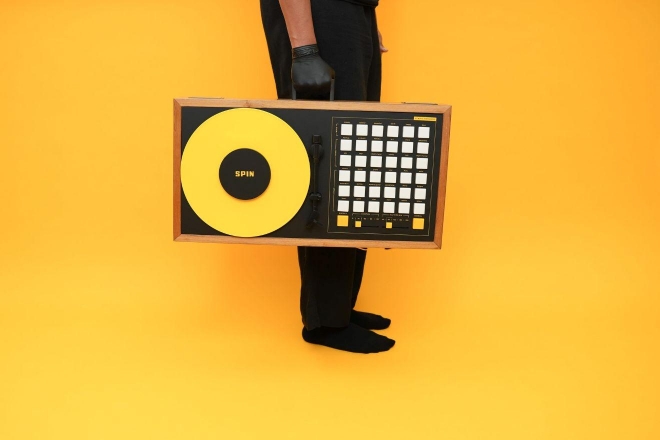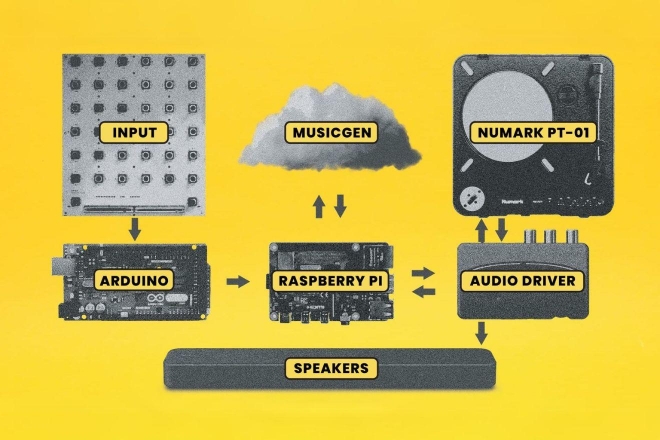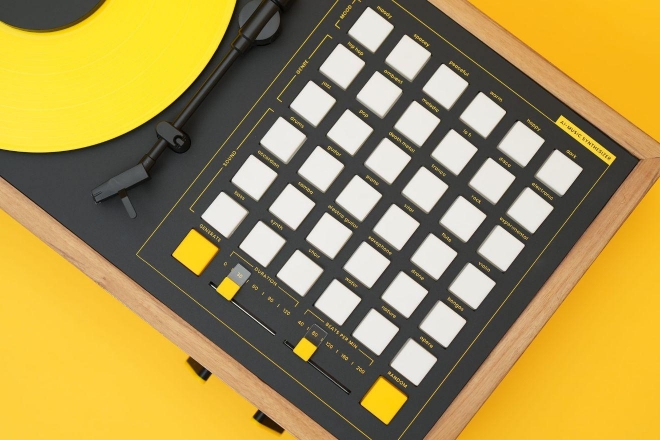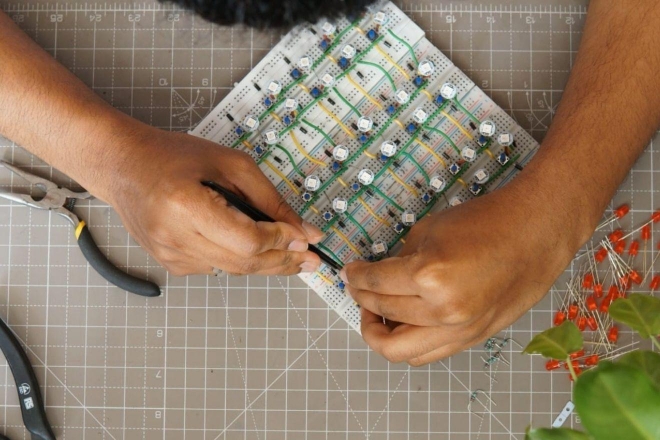SPIN is a concept-model AI synth that "serves as an intervention for the industry"
Designer Arvind Sanjeev speaks to Mixmag Asia about his disruptive device that connects to MusicGen

AI in the music industry has been a long-debated subject, but one thing is for sure — it’s not going anywhere but up. Arvind Sanjeev has developed a tangible AI-music synthesizer SPIN that works with the language model, MusicGen.
In most AI cases, individuals would have to type in what they would like for AI to generate, in SPIN’s case — it’s created so you’re able to push specific buttons to select the desired moods, sounds, genres, duration and even the bpm.
Some of the button options include hip-hop, experimental, death metal, lo-fi, drums, samba, drone and many more. If you’re feeling frisky, there’s even a random option.
The synth also includes a Digital Vinyl System (DVS) enabling users to emulate the experience of using real vinyl. This feature on the left side of the device allows for scratching, slowing down, zooming in and listening to individual notes.

Read this next: Meta introduces text-to-music AI generator, ‘MusicGen’
The functionality of the device works by pushing buttons on the input prompts via a lit-up Arduino Mega 2560 which is sent over to a Raspberry Pi 4 Model B. This then triggers the MusicGen API cloud for music files which is loaded into a DVS. This setup allows the transmuted Numark PT-01 and a time-coded control vinyl record to simulate the characteristics of a turntable.
From there, the xWax DVS transmits a package to the Raspberry Pi, which then directs it to a Behringer audio driver, ultimately outputting a melody according to your initial selects.

Arvind Sanjeev, hailing from Kerala, India, is an artist, design technologist and engineer. With prior experience in Sweden, he has also been part of the adjunct faculty for AI at the Copenhagen Institute of Interaction Design.
Read this next: “You can’t commoditise brilliance”: are we truly ready for the AI revolution in music?
His SPIN synth is a concept model, but it showcases how AI could be used in the industry for future cases. However, keep in mind that with AI there’s always been a blurred line regarding copyright issues when it comes to creating music.
Mixmag Asia reached out to Arvind Sanjeev to learn more about SPIN plus his take on the future of AI in music.

What inspired the development of the SPIN?
The past few years have been the start of an AI renaissance. Until a decade ago, people believed machines could never be creative or imaginative. However, as seen from several recent examples, we have crossed the tipping point for AI creativity. From generative models able to synthesize images, text, video and music, AI has become multimodal.
The role of humans in this new wave has shifted from a creator to a curator for machines. Now, we enter ideas and keywords and wait for the AI to generate the output, which is then tweaked and subjected to multiple iterations.
I am investigating this new creative relationship we are forming with machines. Previously, I made an AI-powered typewriter called Ghostwriter that co-creates stories and poems with the user on paper, and now I am exploring the musical side of this relationship through SPIN. These tools need to live in the physical world in order to allow us to take advantage of all our senses and slow down our interaction with them. Doing so creates a safe space where we can play, experiment, debate and create an experiential understanding at our own pace.
How do you see the future of AI expanding in the music industry?
I see the future of AI in the music industry through three levels:
- AI as a solo artist: This is already happening, as seen from Hatsune Miku, a Japanese vocaloid to completely independent AI artists like Dadabot’s relentless death metal streaming AI on Youtube.
- AI as a collaborator: In artist Holly Herndon’s compositions, AI becomes a co-artist with the human. This allows her to test and create several new compositions staggeringly. Holly+ is another example where she trained an AI on her vocals. This model now allows anyone to make music in Holly’s voice.
- AI as your personal composer: SPIN points to a future where music can be hyper-tailored to people’s tastes. It shows a glimpse of how AI can generate custom micro-genres that didn’t exist before. Instead of a one-size-fits-all approach, AI could start from the listener’s end by sensing their emotional valence and generating soundscapes catering to our emotional needs.

How user-friendly is the synthesizer for individuals with varying levels of technical expertise?
SPIN has been designed to make the process of composing with the AI as rudimentary as possible. It breaks down the process of co-composing music with an AI using a tangible interface. Enter the desired mood, genre, sounds and BPM to listen to the music come alive on an LP record. A DVS (Digital Vinyl System) allows you to slow down, zoom in, scratch and listen between the notes. Use it to create new compositions, as a simple sound synthesizer, as a playful scratch tool, or to play relaxing music in the background.
Is ‘SPIN’ something we will be able to see as a consumer-based product soon?
SPIN is an experiment and not intended to be a consumer product. It serves as an intervention for the industry.
Who are your favourite electronic music artists?
Ólafur Arnalds and Nils Frahm are among the top artists I follow.
Who inspires you artistically?
Holly Herndon and Hainbach’s work has been great to learn from.
Find out more about SPIN here.
Miki Kitasako is Mixmag Asia’s Social Media and Content Producer, follow her on LinkedIn.


